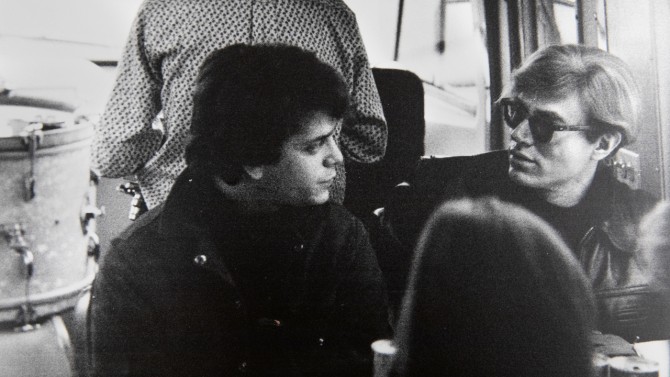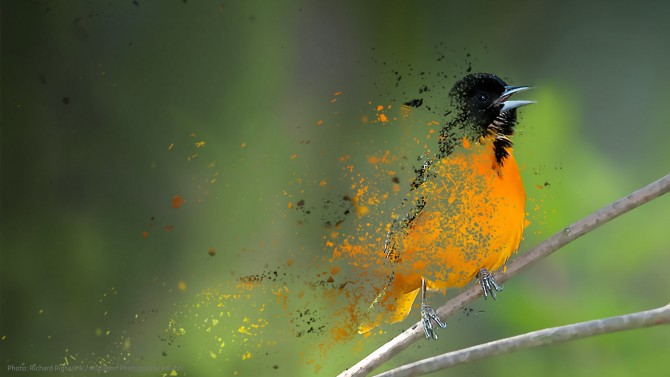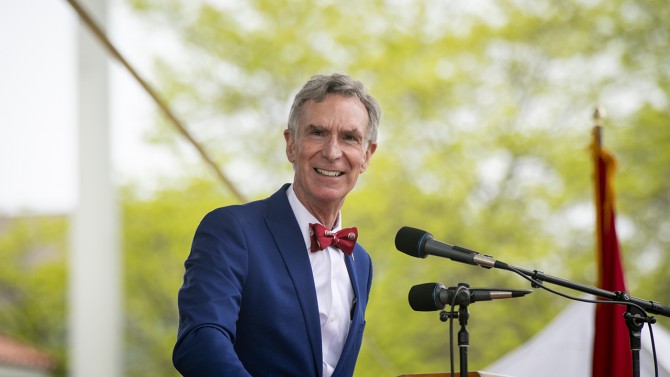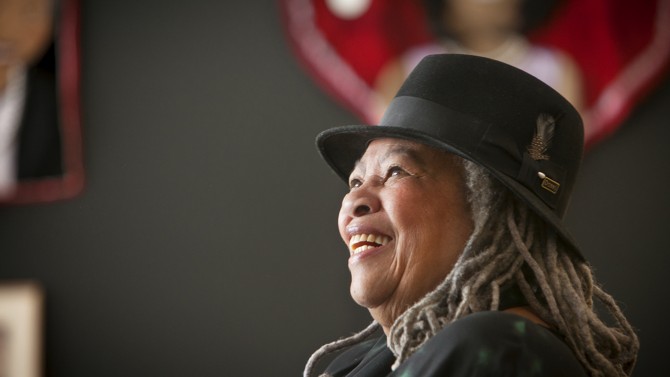Our Year in Review: 2019
Research tops list of 2019’s most read stories
In 2019, the Chronicle published approximately 1,500 stories, touting Cornell’s multipronged mission: to discover, preserve and disseminate knowledge, and, as New York’s land-grant university, to educate with a public purpose.
In addition to the world-class education it offers, Cornell is a renowned research university, so it should come as no surprise that the most read Cornell Chronicle stories of 2019 dealt with the university’s quest to answer some of science’s most pressing questions.
Research stories about air pollution, engineering and genetics were the Cornell Chronicle’s four most-read stories of the past 12 months, according to Google Analytics.
The most-read story, “Industrial methane emissions are underreported, study finds,” has racked up more than 65,000 page views since it was published June 6. Using a Google Street View car equipped with a high-precision methane sensor, the researchers discovered that methane emissions from ammonia fertilizer plants were 100 times higher than the fertilizer industry’s self-reported estimate, and substantially higher than the Environmental Protection Agency’s estimate for all industrial processes in the U.S.
The second most-read Chronicle story, “Engineers create ‘lifelike’ material with artificial metabolism,” garnered more than 50,000 page views. Published April 10, the article reported on how Cornell engineers constructed a DNA-like material with capabilities of metabolism, in addition to self-assembly and organization – three key traits of life.
Other well-read cutting-edge research stories: Crispr-cas3 innovation holds promise for disease cures (nearly 41,000 views); and Cornell scientists discover new antibiotic resistance gene (more than 27,000).
The No. 5 Chronicle story in terms of hits, and the top non-research story of the year, came in mid-September with good news for many future doctors: Weill Cornell Medicine announces debt-free medical education, collecting more than 21,000 clicks.
Beyond the numbers, Chronicle stories in 2019 focused on how the university accomplishes its mission and priorities, as exemplified in President Martha E. Pollack’s State of the University address.
As New York’s land-grant university, Cornell takes seriously its mission to positively impact its home state and does so in many ways. In January, a Cornell Engineering team led by Dean Lance Collins proposed a plan to help New York City avoid “L-pocalypse” – a dreaded shutdown of a key stretch of the subway system. Gov. Andrew Cuomo praised the plan’s Cornell ingenuity at a Jan. 3 press conference: “This is really a unique design, a unique system. … It’s faster, it’s cheaper, it’s better than the way we’ve been doing it now.”
The work of Cornell Cooperative Extension impacts every county in the state. One such effort: a project to help restore Long Island’s shellfish populations to keep a major downstate industry afloat. Extension-Suffolk County used its extensive aquaculture expertise to rejuvenate waters there by spawning millions of oysters and hard clams and planting them in five coastal sanctuaries in Nassau and Suffolk counties. The effort was a key part of New York state’s $10.4 million Long Island Shellfish Restoration Project.
Cornell’s Local Roads Program partners with New York state communities to improve the quality and safety of New York’s roads by offering free and low-cost services to the 1,500 village, town and county officials who maintain them.
Among programs connecting Cornell and communities across the state, the university’s farmworker initiatives were recognized with a national award from the Association of Public and Land-grant Universities, and ILR’s Criminal Justice and Employment Initiative hosted a prison job fair to connect employers with potential hires.
Other highlights from the past 12 months:
• The Mars rover Opportunity finally called it a day – many days beyond its original 90-day expected lifetime. On Feb. 13, NASA officially ended the 15-year mission to detect evidence of water on the red planet. Steve Squyres, professor emeritus in the Department of Astronomy, in A&S, led the scientific mission, assisted by numerous Cornell students over the years, including two who have since become faculty members: Alex Hayes ’03, M.Eng. ’03, associate professor of astronomy; and Dmitry Savransky ’04, M.Eng. ’05, assistant professor of mechanical and aerospace engineering.
• Closer to home, but still out of this world: Doctoral student Hunter Adams deployed thumbnail-size satellites to monitor environmental conditions in vineyards. Not only was Adams testing the satellites for future space flight, he was able to harvest data that will help farmers make better decisions about growing crops and caring for animals. Dubbed Monarchs, the satellites are a customized version of the ChipSat technology developed in the lab of Mason Peck, professor of mechanical and aerospace engineering.
• A study from the Cornell Lab of Ornithology led to a startling revelation: If you were alive in 1970, more than 1 in 4 birds in the United States and Canada – a total of nearly 3 billion – have disappeared within your lifetime. “We were astounded by this result … the loss of billions of birds,” said Ken Rosenberg, an applied conservation scientist at the Lab and the study’s lead author. The report appeared Sept. 19 in the journal Science, and included analysis of 529 bird species.
• While doing archival research at the Andy Warhol Museum in Pittsburgh, musicologist Judith Peraino in A&S discovered a dozen previously unreleased songs by Rock & Roll Hall of Famer Lou Reed on one side of a cassette tape from 1975. Side 1 of the cassette consists of songs dubbed from soundboard recordings of Reed’s 1975 concerts; Reed labeled Side 2 of the tape “The Philosophy Songs (from A to B and Back).” Understandably, among Peraino’s first reactions to her discovery was “disbelief.”
• In March, Cornell Law School professor Sheri Lynn Johnson argued before the U.S. Supreme Court in defense of Mississippi death row inmate Curtis Flowers. An African American, Flowers had been tried six times by the same white state prosecutor for a 1996 quadruple murder that Flowers said he did not commit. The prosecutor’s repeated dismissal of prospective black jurors constituted “discrimination on the basis of race,” Johnson said before the court. Seven of the nine justices – including the newest justice, Brett Kavanaugh, who wrote the majority opinion – agreed. On June 21, the court overturned his 2010 conviction.
• From Weill Cornell Medicine: A joint study with NASA researchers revealed that long-term spaceflight causes more changes to gene expression than shorter trips, especially to the immune system and DNA repair systems. This was just one finding from two-year Twins Study, involving identical twins Scott and Mark Kelly. Christopher Mason, associate professor of physiology and biophysics at Weill Cornell Medicine, led a team of 10 researchers chosen by NASA to compare genetic, physiologic and behavioral changes in the brothers.
• The College of Veterinary Medicine played a major role in the canine world’s premiere event – the Westminster Kennel Club Dog Show, Feb. 9-12 at Madison Square Garden, in New York City. The veterinary college and its Stamford, Connecticut-based satellite clinic, Cornell University Veterinary Specialists, are now the official providers of veterinary care, and they debuted at this year’s WKC show. “It was a tremendously rewarding and educational opportunity for our veterinarians and students,” said Dr. Lorin Warnick, Ph.D. ’94, the Austin. O. Hooey Dean of Veterinary Medicine.
• Cornell’s presence in New York City expanded in January with the opening of the School of Industrial and Labor Relations’ new headquarters and conference center, in the historic General Electric building at 570 Lexington Ave. in midtown Manhattan. Nine other colleges, units or programs – including Engaged Cornell, Cornell University Cooperative Extension-NYC, and Cornell Engineering’s Systems Engineering Program – also moved their New York City operations into the ILR space. Weill Cornell Medicine has had offices in the building since July 2018.
• On campus this year, construction of the North Campus Residential Expansion began. The expansion will add approximately 2,000 student beds, plus dining facilities and recreation spaces, to North Campus. The plan ultimately will give Cornell the ability to house all first-year students in campus housing designed for the first-year residential experience and all sophomore students in campus residence halls, co-ops and other affiliated housing. Also, the Sustainable Cornell Council, announced Sept. 9, will direct and coordinate Cornell’s role as an international leader in addressing climate change and promoting sustainability. It replaces two previous sustainability groups. And the faculty-led Social Sciences Implementation Committee released an interim report Nov. 18 recommending the best approach for establishing a world-class public policy entity over the next 10 to 15 years.
• In one of many intercampus stories, the College of Architecture, Art and Planning is partnering with Cornell Tech on a pilot program that sends master’s students in matter design computation to the New York City campus for a semester.
• The university held several high-profile events this year. On the 50th anniversary of a pivotal moment in Cornell’s history, two alumni returned to campus to offer insights not just as witnesses to that history but as participants in it. Frank Dawson ’72 and Harry Edwards, Ph.D. ’73, held a public conversation April 18 in Bailey Hall about social justice and the 36-hour occupation of Willard Straight Hall. Later in April, a community reading of Homer’s “Odyssey” was the first event in the College of Arts and Sciences’ “Arts Unplugged” series. October saw a visit by Rep. Adam Schiff, who discussed the impeachment inquiry and his role as chairman of the House Intelligence Committee. Also in October, survivors, family members, friends and university officials dedicated a memorial to the nine members of the Cornell community who perished in a 1967 residence hall fire. Located between Day Hall and Sage Chapel, the memorial was co-designed by a landscape architecture student.
• What would a year at Cornell be without a visit from one of its most celebrated alums, the Science Guy himself, Bill Nye ’77? He was tapped as Senior Convocation speaker and delighted the thousands of graduates and their families, urging the Class of 2019 to stay optimistic as they tackle unparalleled challenges. “When it comes to changing the world, don’t be scared. Don’t freak out,” he said. “[T]ake that fear and turn it into excitement. You’re graduates of Cornell University, for crying out loud.”
• Passings: Cornell lost several members of its community in 2019, notably literary giant Toni Morrison, M.A. ’55, who died Aug. 5 in New York City at age 88. Morrison’s novel “Beloved” won the 1988 Pulitzer Prize; in 1993, she won the Nobel Prize in literature. “The loss of Toni Morrison is incalculable,” said Gerard Aching, M.A. ’90, Ph.D. ’91, professor of Romance and Africana studies in A&S. Added Kenneth MacLane ’73, M.A. ’74, MFA ’76, the W.E.B. DuBois Professor of Literature Emeritus in A&S: “It is not an overstatement to suggest that Toni Morrison was America’s Cervantes … one could not have Jesmyn Ward or Gloria Naylor without her.”
Media Contact
Get Cornell news delivered right to your inbox.
Subscribe




